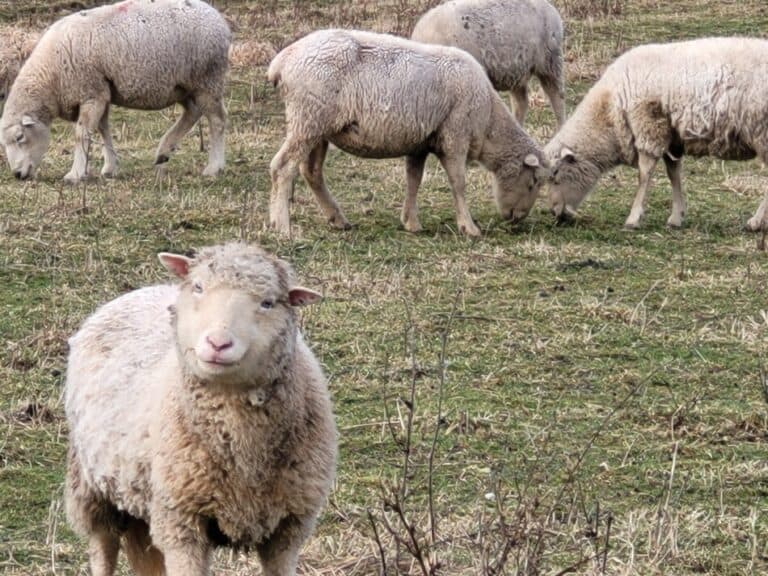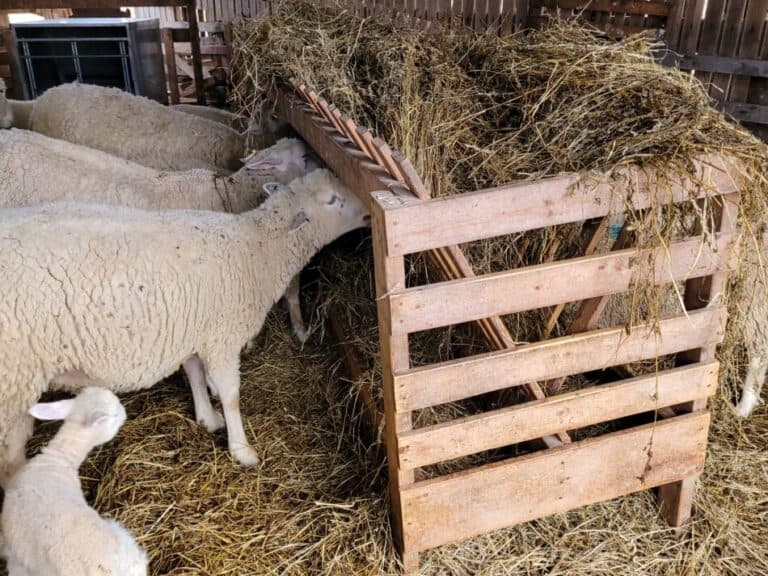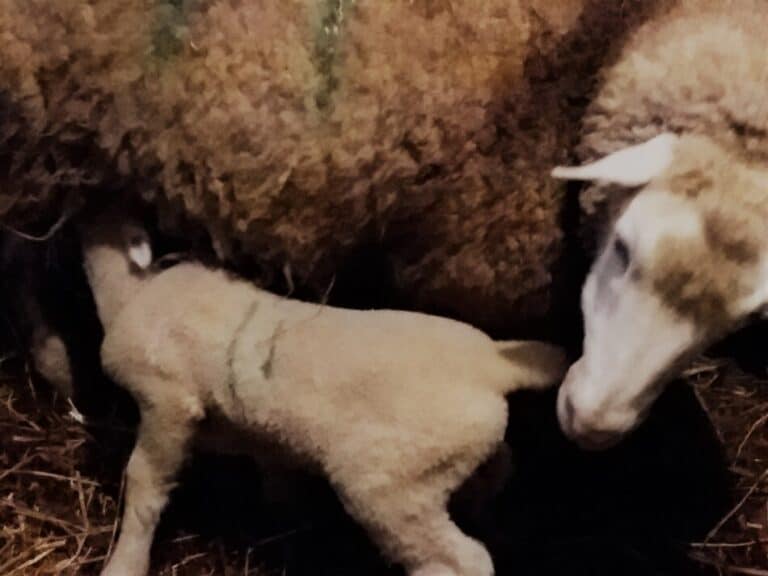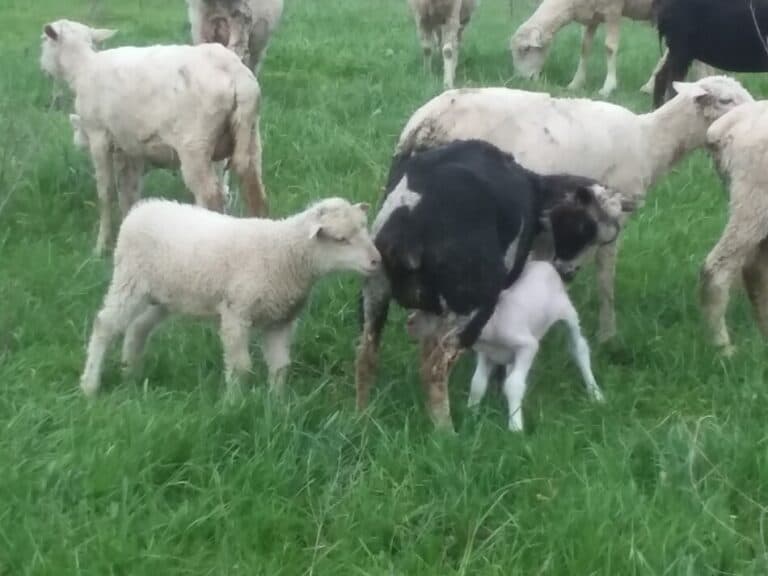Why Don’t Sheep Shrink In The Rain?
We all know that the fastest way to ruin a wool garment is to put it through the wash, you can’t treat wool like that or it will shrink!
If wool shrinks when wet and sheep have wool, why don’t sheep shrink in the rain?
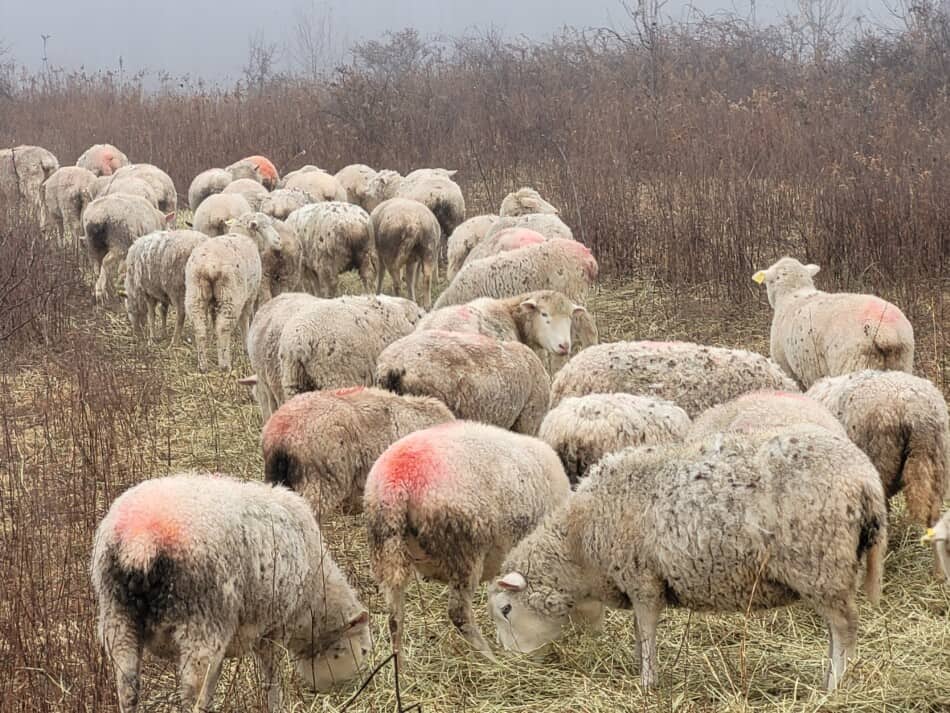
Sheep do not shrink in the rain
Sheep do not shrink in the rain, at least not in the way you may think of shrinking.
Since there are basically two parts that could shrink, the sheep’s body and the wool, we’ll split them off and tackle each one separately.
The body of the sheep remains the same after a rain, which is the same as you still being you after you get out of the shower or bathtub.
That still leaves the wool portion of the sheep to shrink, meaning the wool on the sheep could be shrunk down after or during a rain. Why doesn’t the fleece on the sheep shrink in the rain?
Wool has a grease on it, called lanolin, that the sheep naturally produces. Lanolin helps water, including rain, to shed off of the fleece.
Why Do Sheep Have Paint On Them? goes over the reasons why you would see a sheep with what looks like paint marks on her wool.
Wool shrinks by felting
Wool can shrink down by felting. In the clothing or craft world, this is done on purpose to take an airy fluff of fibers and turn it into more of a solid yet flexible material.
Since all things made of wool are not necessarily felted, there has to be a way to get wool to felt and a way to keep wool from felting.
Felt made with hot water and agitation
Felt is made with hot water and agitation. A fleece that is prone to felting needs both to start to shrink down into felt.
This is why most sheep do not shrink down in the rain, the rain is cool, there is little to no agitation of the wool fibers individually rubbing against one another, which is needed for felting.
Wool shrinks with agitation, not just by being wet
The difference between wet wool, on the sheep or off of it, and a wool garment that you’ve accidentally shrunk is not the wet part of the washing that caused the felting, it’s the agitation part.
Without agitation, wool can get wet repeatedly and dry out to be just as it was before, both on and off the sheep. The agitation is the key to the shrink caused by felting.
If there is no agitation, there is no felting and there is no shrinking.
This is how folks who work with wool and do not want it to shrink, yet still want to wash their garments, can still wear the hat or mittens after they are washed. The wash was done carefully, without agitation.
If you want to learn to wash fleeces, read 7 Steps To Wash Raw Wool For Felting (written by me on my other site) that takes you from just shorn wool to a clean fiber that is ready to use for making felt.
Fleece can be affected by rains
If you watch a flock of sheep standing outside in the rain, you’ll see some sad faces. Nobody likes to be standing in the rain, sheep included! But, things quickly change as soon as the sun comes out.
Once the rain stops, the sheep will start to graze again and carry on like nothing happened, since being rained on is normal in sheep world.
Rain can flatten the fleece on the sheep
Some sheep do “shrink” down a bit when it rains, by this I mean that their wool flattens out since it is heavier now that it is wet. This is like your shirt being heavy when it comes out of the washing machine.
These sheep will re-poof naturally, as soon as they dry out.
Generally speaking, the shorter and springier the wool, the less it will look different on the sheep when the sheep is wet.
Sheep with longer fleeces can look weighed down and soggy from the rain, but will also return to normal looking poof when they dry out. The shrink was temporary.

Some fleeces can felt or shrink on the sheep
Breeds of sheep that are prone to felting can have portions of their fleece felt or shrink down while still on the sheep.
Usually this happens to fleeces that are very easy to felt or fleeces that are left on the sheep for longer time than is normal for the breed.
To be clear, the shrinking, which is the result of felting on the sheep, does not happen after one or two rains, this takes months to show up.
In order for the wool to felt a bit on the sheep, the wool needs some length first, then it can start to felt on breeds or types of sheep whose fleeces tend toward felting.
We have had this happen to some of our sheep that have Finn genetics, their wool tends to readily felt, even on the sheep. It was rare for us to get a Finn type fleece that did not have shrinking due to felting.
Don’t get me wrong, the sheep still had plenty of wool but we would notice a flatter spot on the back and once you get to shearing, it is easy to tell that the flat spot is actually felted down wool on the sheep.
Not all fleeces will felt
Not all sheep have this shrinking or felting tendency. It seems to be more likely in sheep with lower grease fleeces and high likelihood of felting, the Finn fleece being an excellent example of both.
Fleeces like those on our Dorset type sheep are never shrunk down or felted, it just doesn’t happen to this type of wool. If you are not familiar with Dorset wool, it is very springy and does not felt well.
The reason I bring up these two breeds is to point out that both of these types of sheep would have been kept in the same flock, so also the same conditions, yet the wool is affects are vastly different.
Things that prevent a fleece from felting on the sheep:
- the breed has wool that is resistant to felting
- the sheep has a high level of lanolin (natural grease) in wool
- the wool is short
- the wool is naturally springy
Things that promote felting of a fleece on a sheep:
- being a felt prone breed
- less frequent shearing
- lower grease content
- longer wool fiber length
If you are interested in more of my articles on sheep, consider:
Should You Give Sheep Hay Or Grass?
12 Things Sheep Are Used For Today
A great site for general sheep information is Sheep 101, which has articles on keeping, breeding and caring for sheep as well as a nice breed list including sheep breeds from all over the world.
